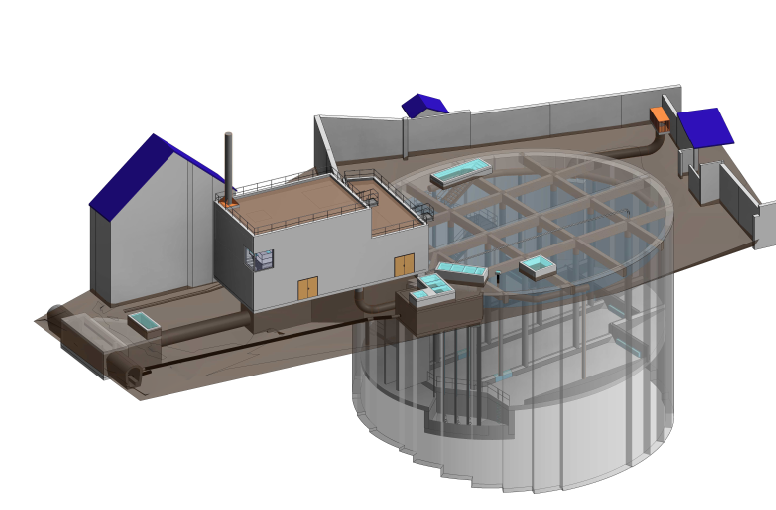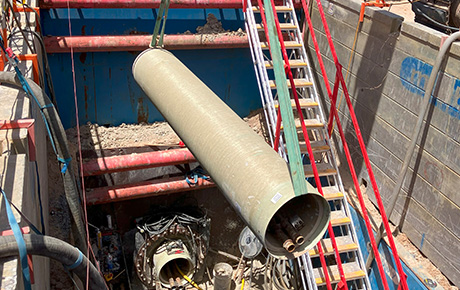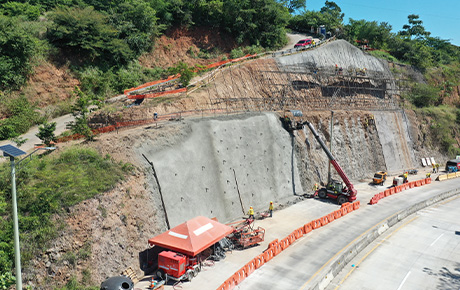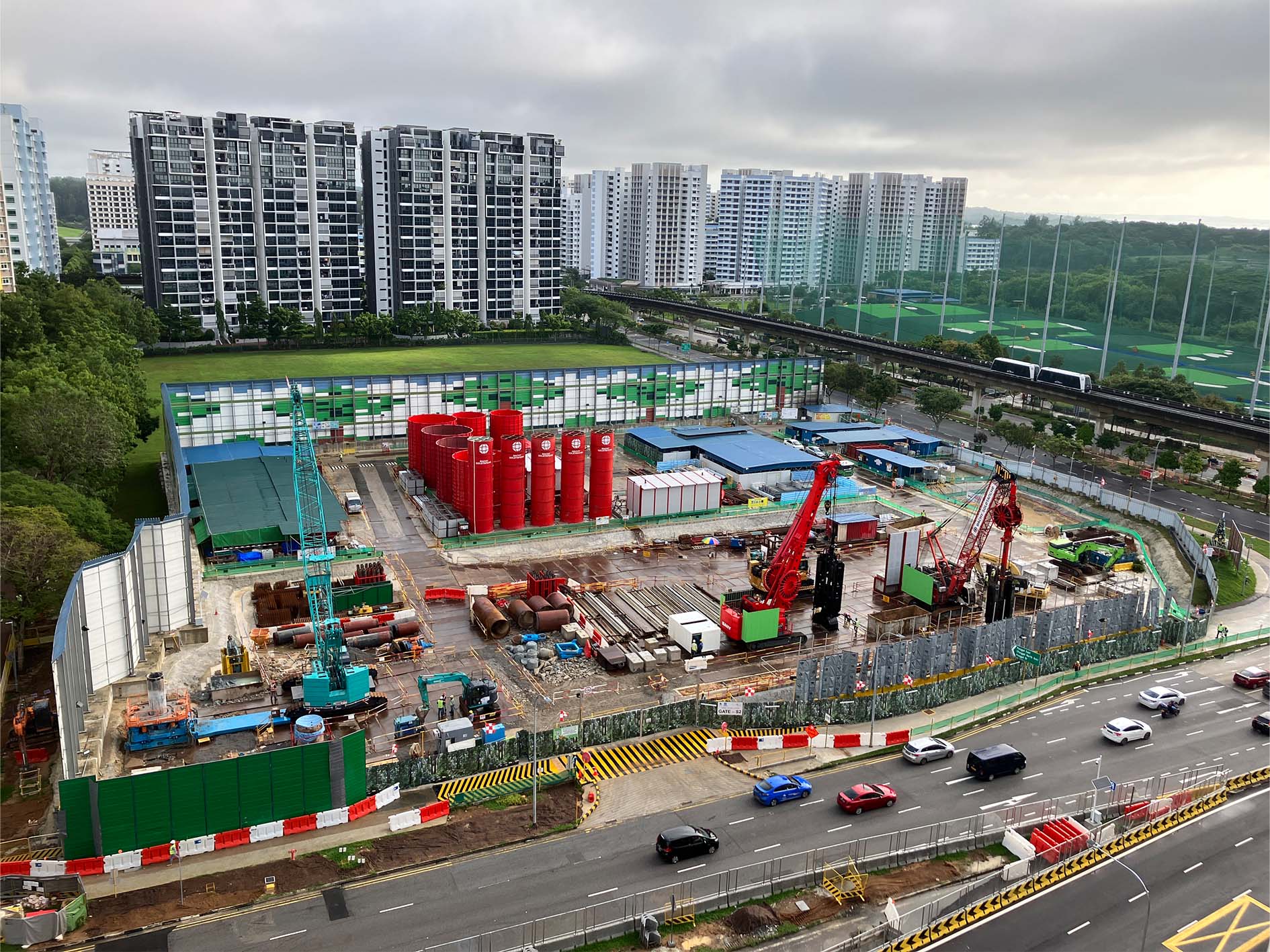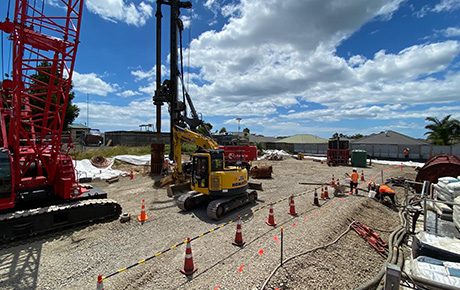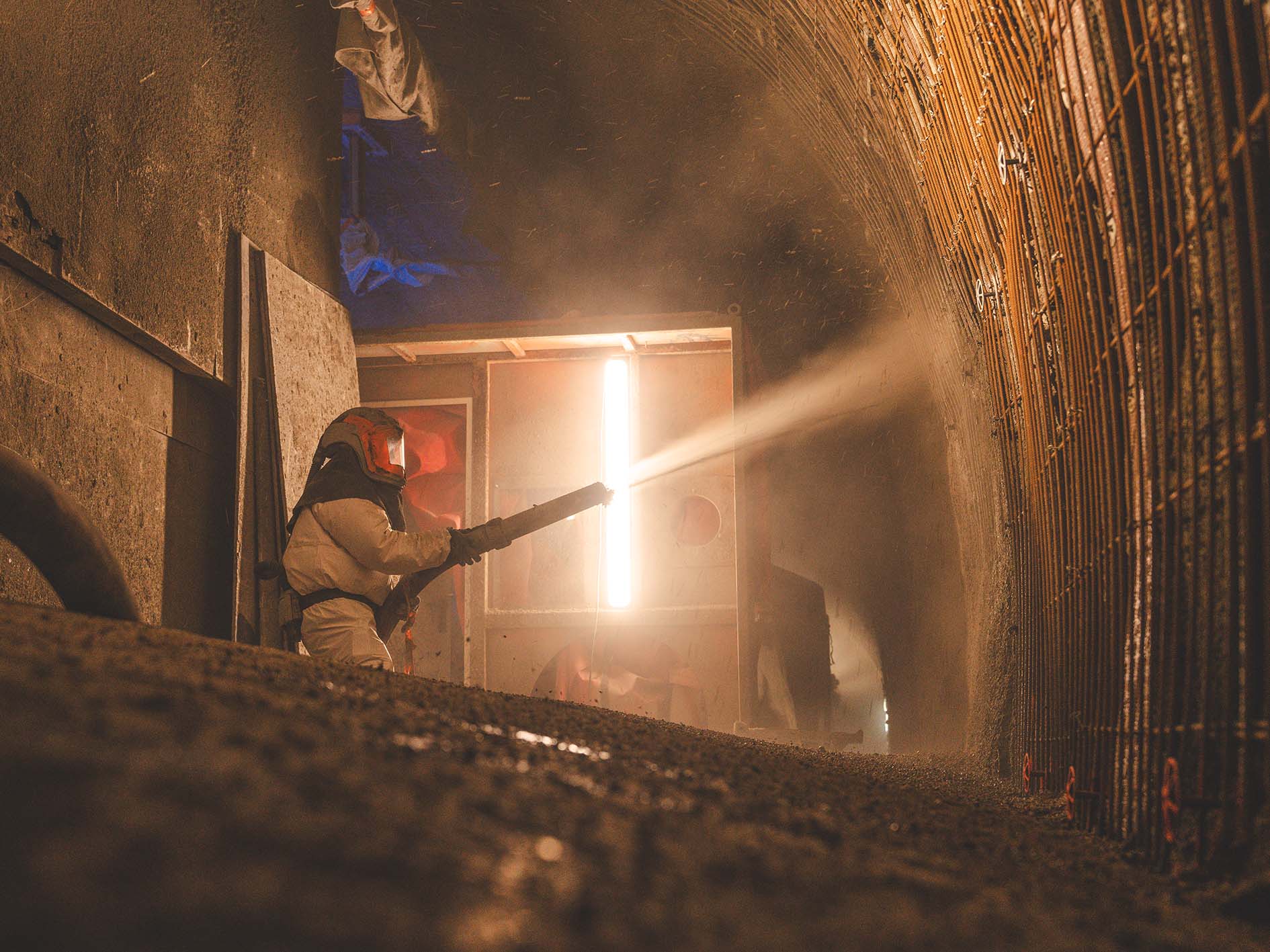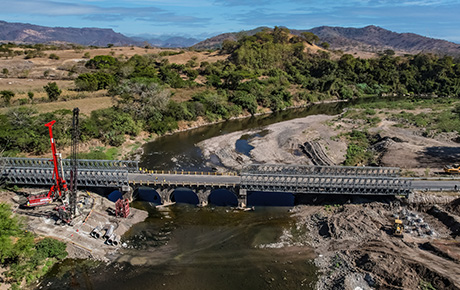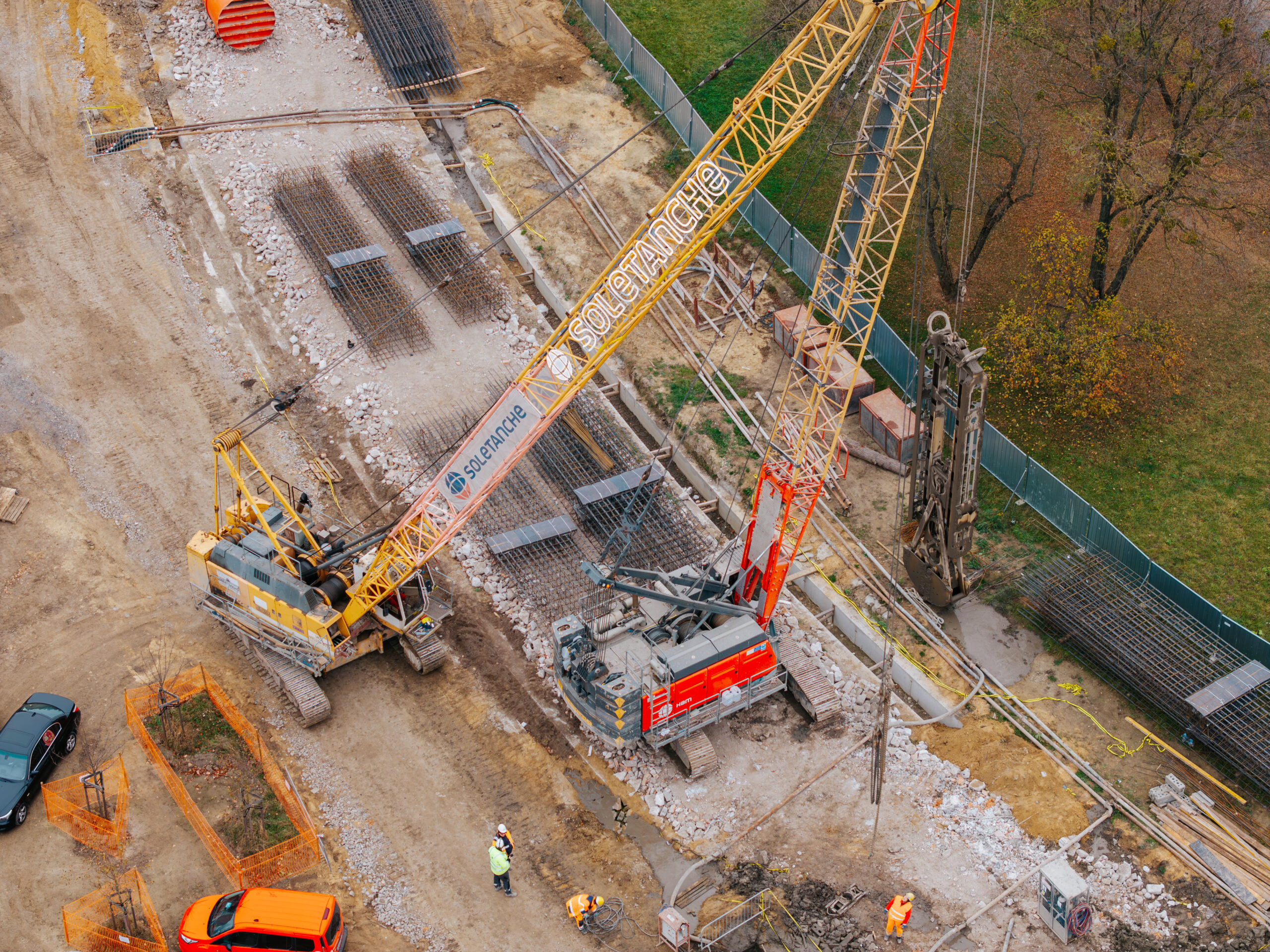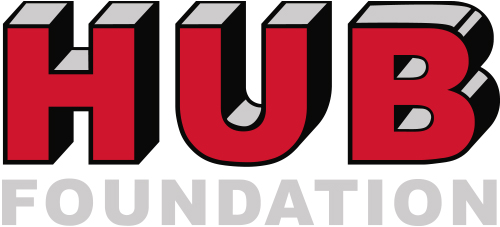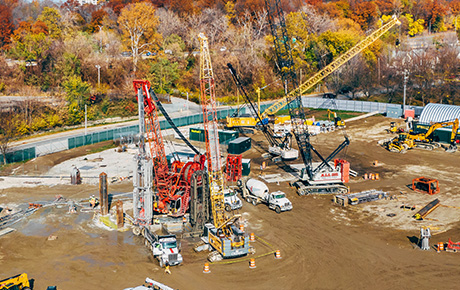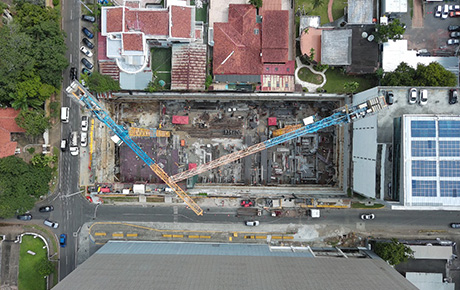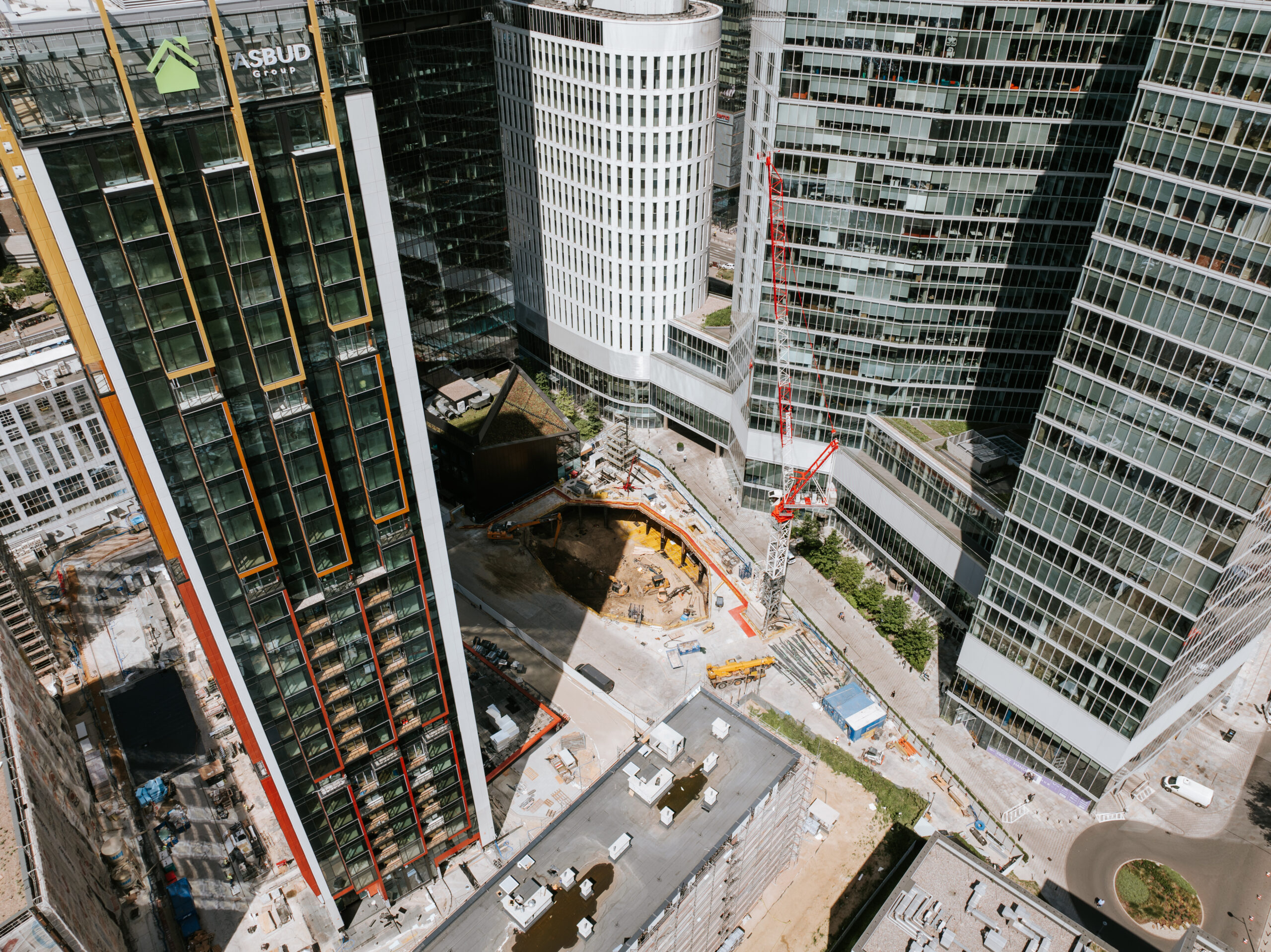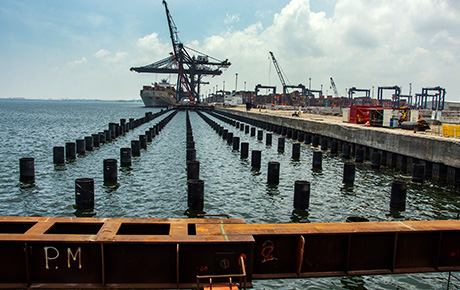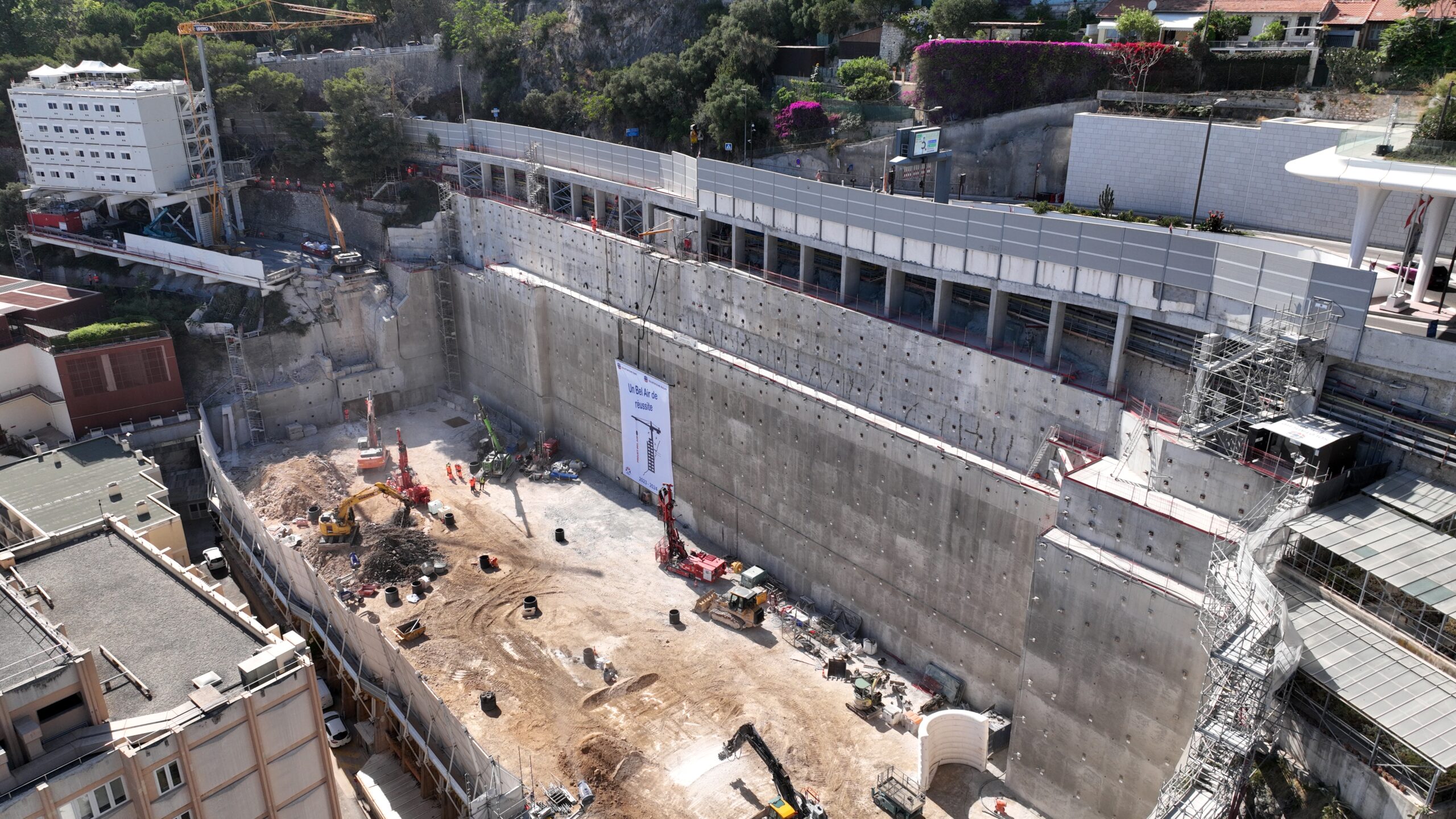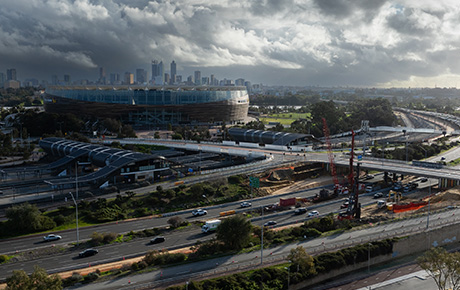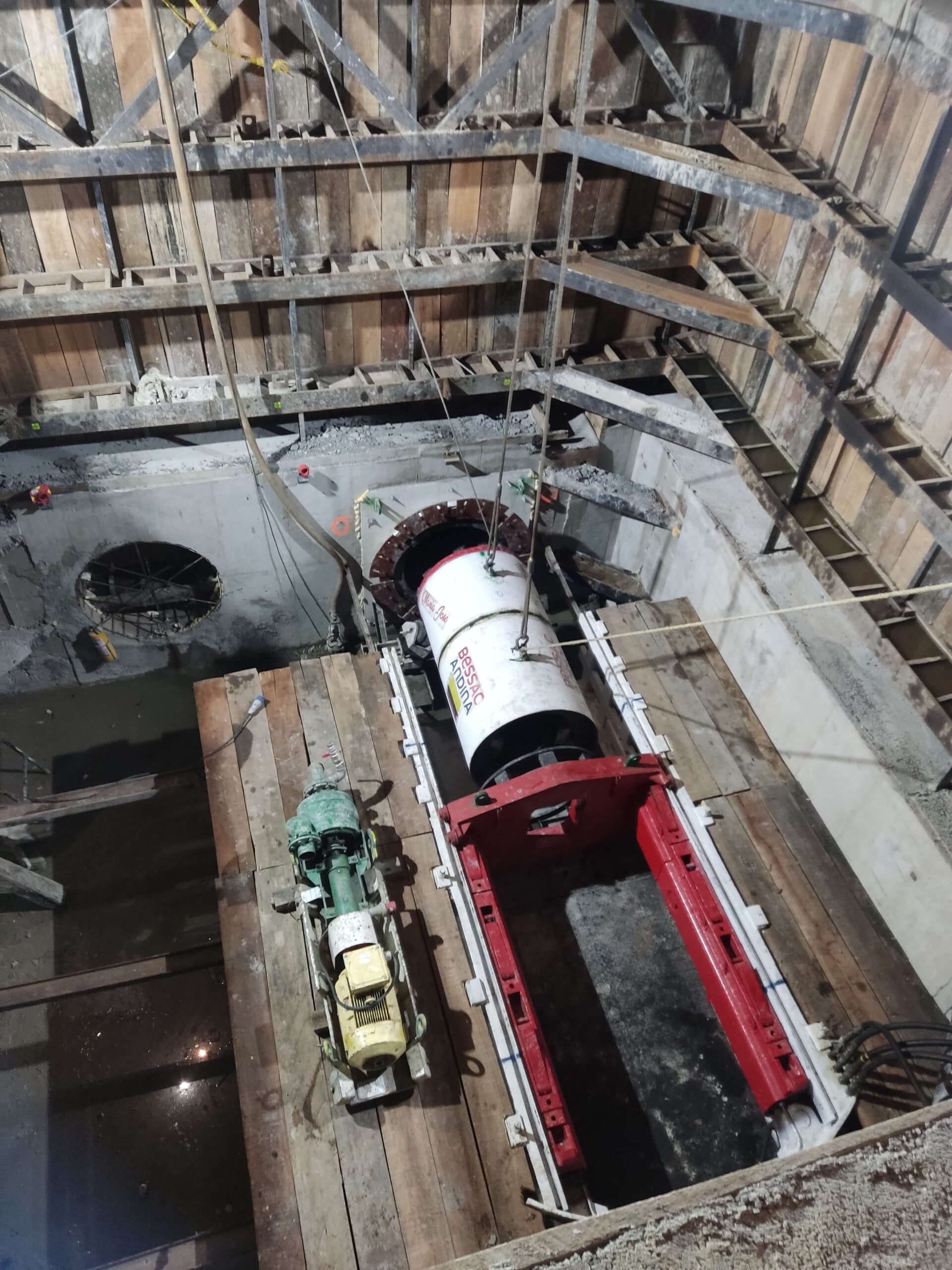June 18th, 2021
The Güreşen Bridge Project in Turkey is coming to an end
Güreşen Bridge is a part of Borçka – Camili (Dokap) state highway construction project and it will be passing above Çoruh which one of the important rivers in Turkey. After completion, this project will connect Borçka to its 8 villages in the North East part of the country. Diaphragm wall and barrette works were awarded to Zetaş Zemin Teknolojisi A.Ş. in July, 2020 by Employer AKM Yapı Taahhüt Sanayi ve Ticaret A.Ş. and SNH İnşaat A.Ş. joint venture.
Bridge will be constructed as asymmetric cable stayed type and slab loads will be transferred to one main pier which will be standing on the bank of the river.
Due to the inclined base rock level main pier was planned to be constructed on barrettes instead of excavating down to baserock level and foundation was planned to be buried 8.60 m under platform level. Cantilever diaphragm walls were planned to be constructed to support the temporary excavation.
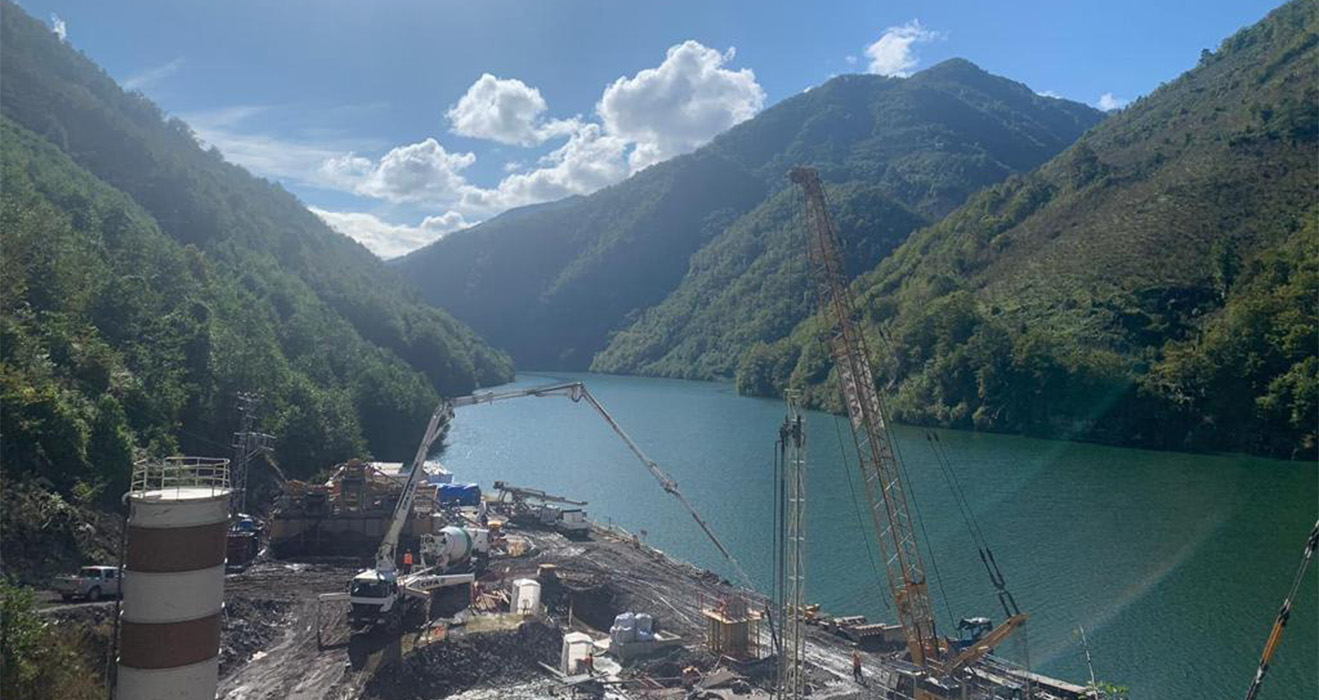
Soil Profile consists of Fill, Slope Debris and Bedrock. Bedrock is composed of Andesitic Lava, Agglomerate and Basalt layers where UCS values over 100 MPa can be encountered. Its elevation is varying between 4.5 and 18 m from the platform level. There were also large boulders inside the Fill and Slope Debris bringing stability risks them. Ground water table is at 2.5 m depth but seasonally can increase up to 0.5 m depth.
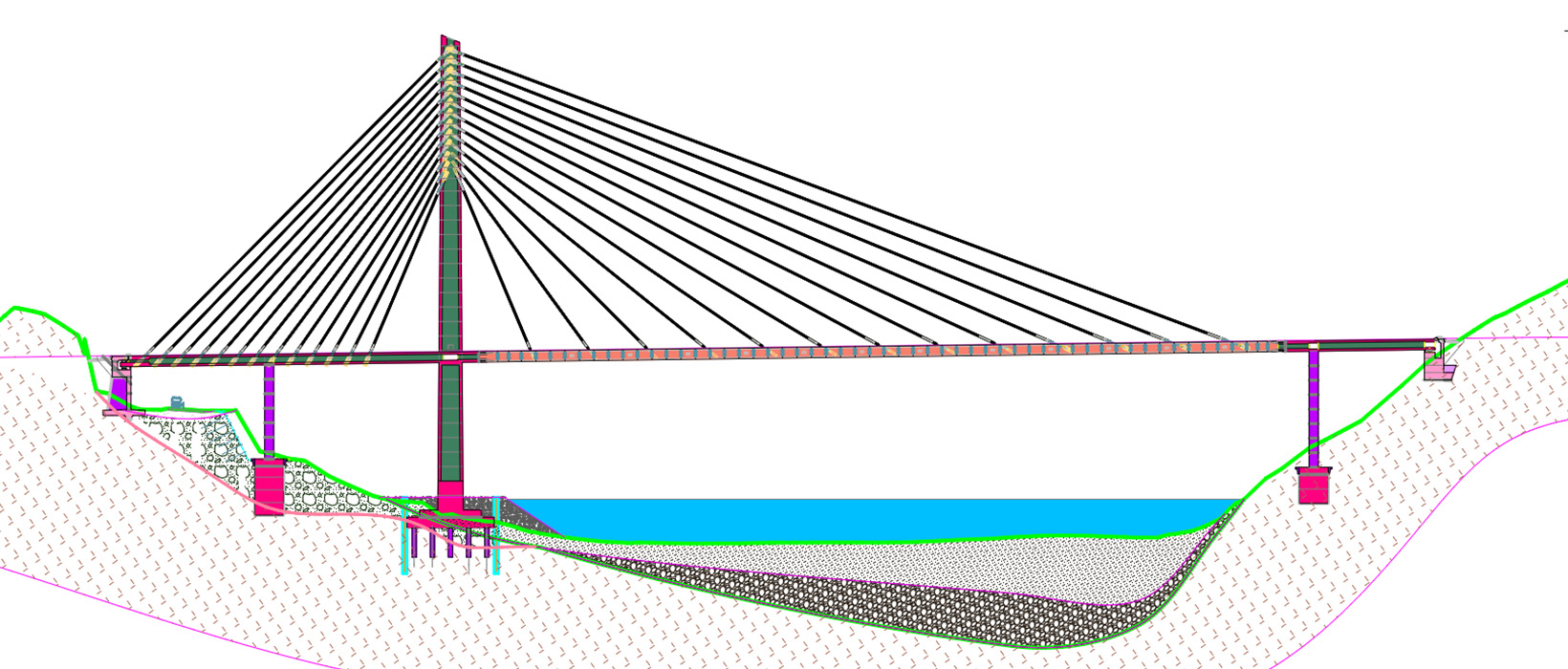
21 m long diaphragm walls with 1200 mm thickness were planned by the designer, Sunko Proje A.Ş. Shoring system was cantilever and diaphragm walls were planned to be socketed in bedrock to provide the stability and eliminate the excessive ground water seepage under diaphragm walls. 1200×2800 mm Barrettes were also planned to be socketed into bedrock with varying depths according to the variable rock elevation. Barrette lengths were 12.5, 10.5 and 8 m below excavation level.
Bauer MC 96 Hydrofraise Cutter, Grab diaphragm wall machines were mobilized for barrette and diaphragm wall works. To eliminate stability problems during inside the shaft excavation, low pressure jet grouting application was applied to stabilize the fill and debris layers.

Despite the challenges in very hard bedrock and fill and slope debris with large boulders barrettes were completed as of May, 2021. Site team is keep working in 2 shifts under pandemic conditions and obeying Covid-19 precautions and diaphragm walls are expected to be completed in July.
With providing effective and economic solutions to the challenging problems Zetaş is continuing to undertake special projects.
